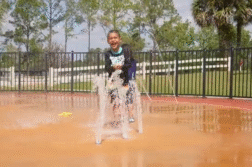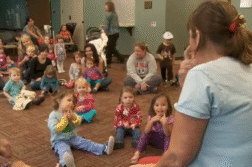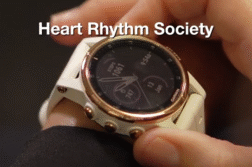SALT LAKE CITY, Utah. (Ivanhoe Newswire) – Congenital heart disease is not just an adult problem. In fact, one in every 100 babies born in the world is born with a heart problem. About 40,000 kids in the United States have one. While some babies require little medical intervention, others may need lifesaving operations. And now, doctors are using an adult procedure to save the littlest of lives.
Creedon McCall’s mother, Callie McCall says, “He is the baby. He is youngest by a whole minute.”
Little Creedon is the youngest of six. His mother says her twin baby boys, Creedon and Kixton were the picture of health right after their birth – but then, things started to change for Creedon.
“He was born with a bad aortic valve that one of our pediatric cardiology colleagues actually used through a catheter and a balloon to open up at one day of life,” explains Adil Husain, MD, Chief Pediatric Cardiothoracic Surgeon at the University of Utah Health/Primary Children’s Hospital.
That helped his heart function better. Then, two years later, Creedon was diagnosed with stage four neuroblastoma – the rare cancer that develops in nerve cells was treated with chemo, radiation and then, immunotherapy.
Dr. Husain says, “While all of those things were happening, he gained some fluid around his heart and that aortic valve became much more dysfunctional.”
That’s when Dr. Husain performed a surgery usually done on adults.
“The Ross procedure is unique because you’re actually using another valve inside of your heart as your new aortic valve,” he further explains.
The valve will grow as Creedon grows and should not need to be replaced for 15 to 20 years.
Dr. Husain adds, “The Ross procedure gets you about as close to a cure as you have in terms of all the other options that are out there.”
Creedon is now cancer-free and his heart is beating strong. Doctors say he should grow up to be a normal healthy little boy.
Contributors to this news report include: Marsha Lewis, Producer; Roque Correa, Videographer & Editor.
To receive a free weekly e-mail on medical breakthroughs from Ivanhoe, sign up at: http://www.ivanhoe.com/ftk
MEDICAL BREAKTHROUGHS
RESEARCH SUMMARY
TOPIC: CREEDON’S STORY: BEATING CANCER AND HEART DISEASE
REPORT: MB #5235
BACKGROUND: Congenital heart disease (CHD) refers to a group of structural abnormalities in the heart that are present at birth. It is one of the most common types of birth defects, affecting approximately 1 percent of all live births in the U.S., which comes out to about 40,000 births per year. CHD can range from mild conditions with minimal impact on heart function to severe defects that require immediate medical intervention. Babies born with critical CHD generally need surgeries done within their first year of life. There are an estimated 1.4 million adults living with CHD and around 20 to 30 percent of those individuals suffer with other physical problems or cognitive disorders.
(Source: https://www.cdc.gov/ncbddd/heartdefects/data.html)
DIAGNOSING: Diagnosing congenital heart disease (CHD) in adults involves a combination of medical history analysis, physical examinations, specialized cardiac evaluations, and imaging tests. The goal is to identify the presence of structural abnormalities in the heart and determine the specific type and severity of the defect. If a doctor believes one is at risk for congenital heart disease, they will perform a physical exam. To confirm a diagnosis of CHD, common testing includes ECGs, chest x rays, pulse oximetry, echocardiograms, transesophageal echocardiograms, exercise and stress tests, heart CTs, heart MRIs, and cardiac catheterization.
NEW TECHNOLOGY: Doctors are now using adult procudures to help babies suffering from CHD. The Ross procedure is a unique procedure that uses another valve inside of the heart and your lung valve. The procedure takes multiple hpurs and is done with making an incision in the middle of the patients chest. Each breastbone is is separated to reach the heart and the patient is connected to a heart-lung machine during surgery to do the work of your child’s heart and lungs. Then the surgeon removes the abnormal aortic valve and the pulmonary valve and attaches the pulmonary valve where the aortic valve used to be. The Ross procedure is meant to act as a “cure” and bring your heart back to healthy standings.
(Source:
FOR MORE INFORMATION ON THIS REPORT, PLEASE CONTACT:
Jennifer Toomer-Cooke
Jennifer.toomer-cooke@imai.org
If this story or any other Ivanhoe story has impacted your life or prompted you or someone you know to seek or change treatments, please let us know by contacting Marjorie Bekaert Thomas at mthomas@ivanhoe.com




